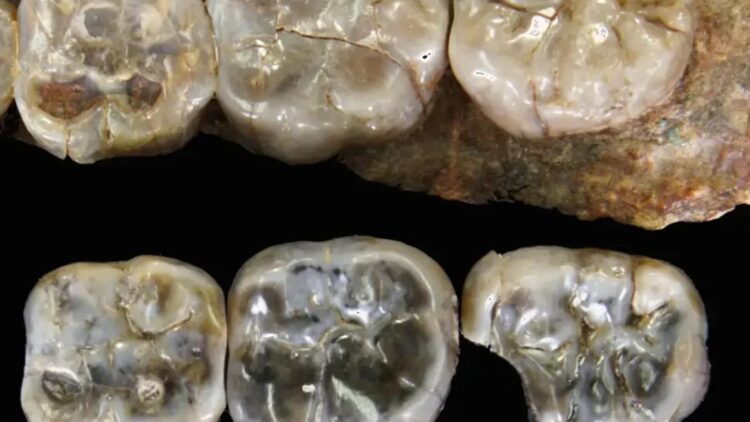Ethiopian researchers have made a groundbreaking discovery that fundamentally challenges our understanding of human evolution by uncovering fossil evidence of a previously unknown species that coexisted with our earliest ancestors. The remarkable find of 13 ancient teeth in Ethiopia’s Afar Region reveals that multiple human lineages lived simultaneously rather than following a simple linear progression from ape to modern human.
Fossil discovery reveals details of early human ancestors through teeth
Researchers have unearthed tooth fossils in Ethiopia dating to about 2.65 million years ago of a previously unknown species in the human evolutionary lineage, one that lived in the same time and place as the earliest-known member of the genus Homo to which our own species belongs.
The scientists discovered in the Ledi-Geraru research project area of northeastern Ethiopia’s Afar Region 10 teeth – six molars, two incisors, one premolar, and one canine – that they concluded belonged to a new Australopithecus species. The teeth came from two individuals.
Until now, six species of the genus Australopithecus, an important early human ancestor that displayed a mix of ape-like and human-like traits, were known from fossils at various African sites. The researchers said the newly found teeth bore traits indicating they belonged to a seventh species.
Evidence of the co-existence of the Australopithecus and Homo species
The scientists also discovered three other teeth dating to 2.59 million years ago that had traits showing they belonged to the oldest-known species of Homo, one that was first revealed by a jawbone unearthed in the same vicinity in 2013.
Scientists have not yet assigned names to the Australopithecus and Homo species represented by these 13 teeth because of the incomplete nature of the fossil remains. Our species, Homo sapiens, is the most recent member of the Homo genus, first appearing roughly 300,000 years ago in Africa before later spreading worldwide.
The coexistence of these two distinct hominin species in the same geographical location challenges long-held assumptions about human evolutionary patterns and suggests that early human development was far more complex than previously understood. The discovery indicates that rather than one species simply replacing another in a linear fashion, multiple human ancestors lived side by side, potentially competing for resources or occupying different ecological niches within the same environment.
Evolutionary implications for our understanding of human evolution
The new dental fossils provide insight into a poorly understood period in human evolution. The close age of the teeth suggests that this newly identified Australopithecus species coexisted in this region with the early Homo species, raising questions about whether they competed for the same resources.
The teeth also indicate that there were four hominins (as species in the human evolutionary lineage are known) that inhabited East Africa at the time. Previous fossils showed that another Australopithecus species and a species of Paranthropus, a hominin possessing a specialized skull adapted for heavy chewing, lived in East Africa during this time.
“This reinforces the idea that the story of human evolution is not of a single lineage changing slowly through time,” said University of Nevada, Las Vegas paleoanthropologist Brian Villmoare, lead author of the research published on Wednesday in the journal Nature.
“Rather, the pattern of human evolution is similar to that of other organisms, repeatedly branching into multiple species throughout the fossil record, many of whom lived at the same time,” Villmoare added.
The Ethiopian fossil discovery represents a shift in our understanding of human evolution, revealing a complex tapestry of species rather than a simple linear progression. Our evolutionary journey involved multiple experiments in human development, with species testing different survival strategies. The coexistence of Australopithecus and Homo species suggests that competition and cooperation between early human ancestors played crucial roles in shaping development.
GCN.com/Reuters


